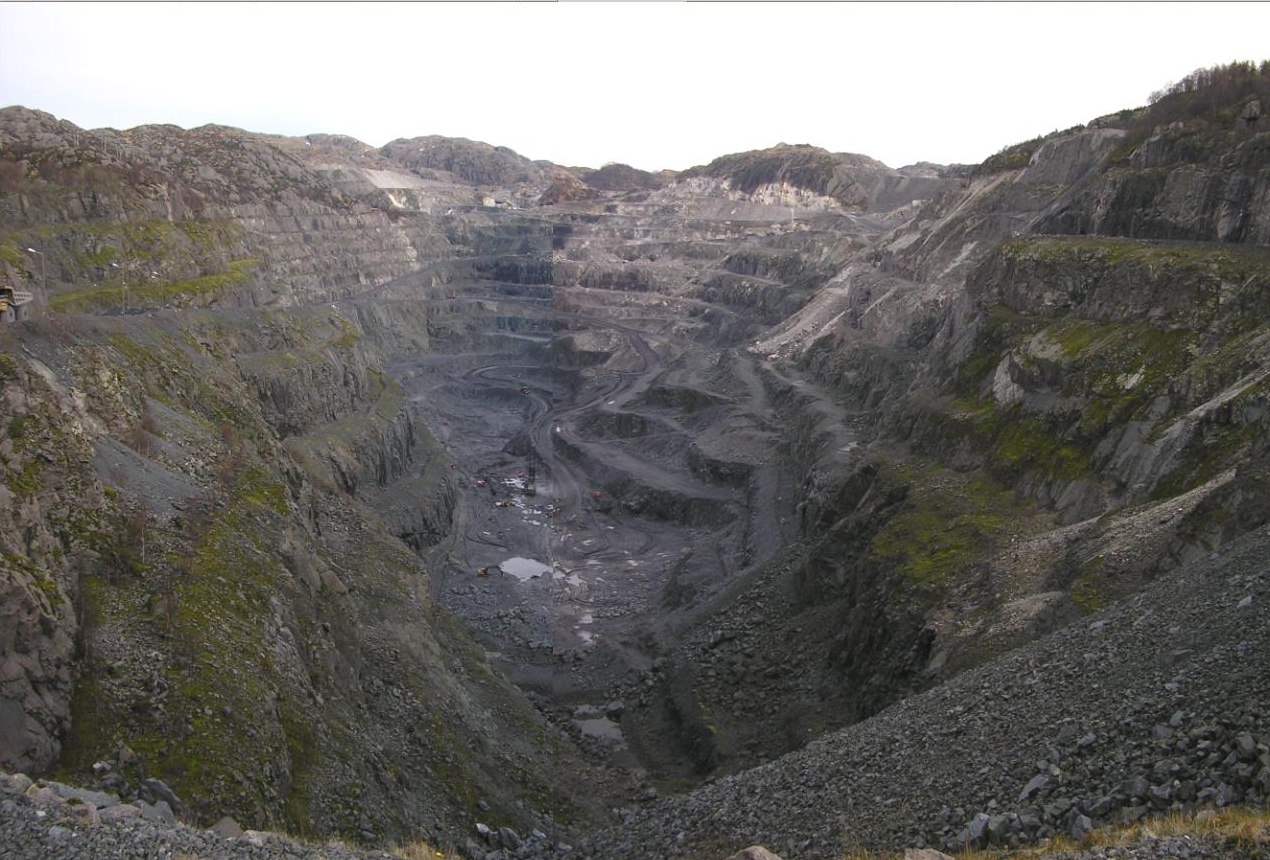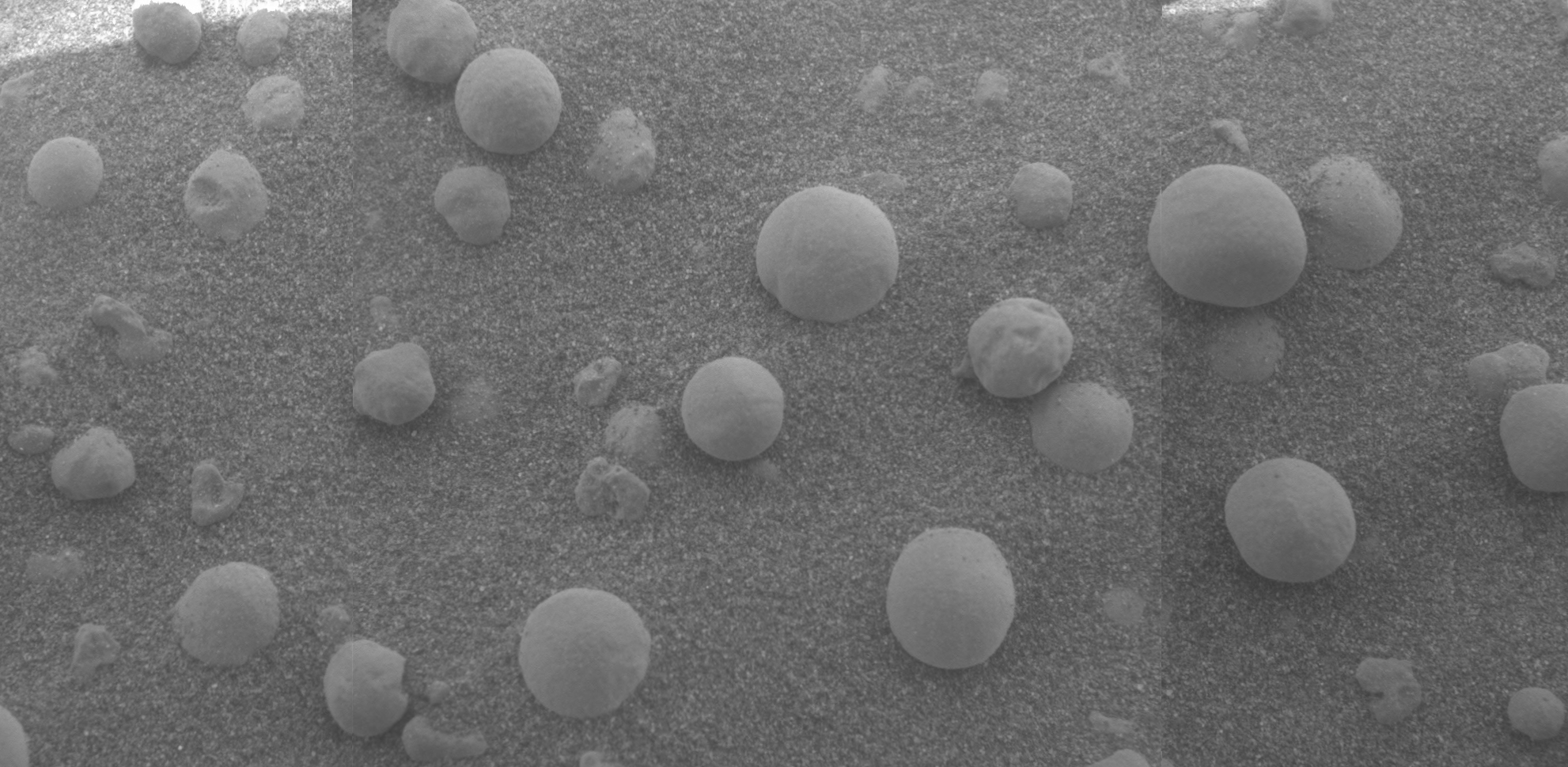|
Field (mineral Deposit)
A field is a mineral deposit containing a metal or other valuable resources in a cost-competitive concentration. It is usually used in the context of a mineral deposit from which it is convenient to extract its metallic component. The deposits are exploited by mining in the case of solid mineral deposits (such as iron or coal) and extraction wells in case of fluids (such as oil, gas or brines). Description In geology and related fields a deposit is a layer of rock or soil with uniform internal features that distinguish it from adjacent layers. Each layer is generally one of a series of parallel layers which lie one above the other, laid one on the other by natural forces. They may extend for hundreds of thousands of square kilometers of the Earth's surface. The deposits are usually seen as a different color material groups or different structure exposed in cliffs, canyons, caves and river banks. individual agglomerates may vary in thickness from a few millimeters up to a ki ... [...More Info...] [...Related Items...] OR: [Wikipedia] [Google] [Baidu] |
Bornite
Bornite, also known as peacock ore, is a sulfide mineral with chemical composition that crystallizes in the orthorhombic system (pseudo-cubic). It is an important copper ore. Appearance Bornite has a brown to copper-red color on fresh surfaces that tarnishes to various iridescent shades of blue to purple in places. Its striking iridescence gives it the nickname ''peacock copper'' or ''peacock ore''. Mineralogy Bornite is an important copper ore mineral and occurs widely in porphyry copper deposits along with the more common chalcopyrite. Chalcopyrite and bornite are both typically replaced by chalcocite and covellite in the supergene enrichment zone of copper deposits. Bornite is also found as disseminations in mafic igneous rocks, in contact metamorphic skarn deposits, in pegmatites and in sedimentary cupriferous shales. It is important as an ore for its copper content of about 63 percent by mass. Structure At temperatures above , the structure is isometric with a un ... [...More Info...] [...Related Items...] OR: [Wikipedia] [Google] [Baidu] |
Molybdenite
Molybdenite is a mineral of molybdenum disulfide, Mo S2. Similar in appearance and feel to graphite, molybdenite has a lubricating effect that is a consequence of its layered structure. The atomic structure consists of a sheet of molybdenum atoms sandwiched between sheets of sulfur atoms. The Mo-S bonds are strong, but the interaction between the sulfur atoms at the top and bottom of separate sandwich-like tri-layers is weak, resulting in easy slippage as well as cleavage planes. Molybdenite crystallizes in the hexagonal crystal system as the common polytype 2H and also in the trigonal system as the 3R polytype. Description Occurrence Molybdenite occurs in high temperature hydrothermal ore deposits. Its associated minerals include pyrite, chalcopyrite, quartz, anhydrite, fluorite, and scheelite. Important deposits include the disseminated porphyry molybdenum deposits at Questa, New Mexico and the Henderson and Climax mines in Colorado. Molybdenite also occurs in ... [...More Info...] [...Related Items...] OR: [Wikipedia] [Google] [Baidu] |
Magnetite
Magnetite is a mineral and one of the main iron ores, with the chemical formula . It is one of the iron oxide, oxides of iron, and is ferrimagnetism, ferrimagnetic; it is attracted to a magnet and can be magnetization, magnetized to become a permanent magnet itself. With the exception of extremely rare native iron deposits, it is the most magnetic of all the naturally occurring minerals on Earth. Naturally magnetized pieces of magnetite, called lodestone, will attract small pieces of iron, which is how ancient peoples first discovered the property of magnetism. Magnetite is black or brownish-black with a metallic luster, has a Mohs scale of mineral hardness, Mohs hardness of 5–6 and leaves a black streak (mineralogy), streak. Small grains of magnetite are very common in igneous rocks, igneous and metamorphic rocks. The chemical IUPAC name is iron(II,III) oxide and the common chemical name is ''ferrous-ferric oxide''. Properties In addition to igneous rocks, magnetite als ... [...More Info...] [...Related Items...] OR: [Wikipedia] [Google] [Baidu] |
Ilmenite
Ilmenite is a titanium-iron oxide mineral with the idealized formula . It is a weakly magnetic black or steel-gray solid. Ilmenite is the most important ore of titanium and the main source of titanium dioxide, which is used in paints, printing inks, fabrics, plastics, paper, sunscreen, food and cosmetics. Structure and properties Ilmenite is a heavy (specific gravity 4.7), moderately hard (Mohs hardness 5.6 to 6), opaque black mineral with a submetallic luster. It is almost always massive, with thick tabular crystals being quite rare. It shows no discernible cleavage, breaking instead with a conchoidal to uneven fracture. Ilmenite crystallizes in the trigonal system with space group ''R''. The ilmenite crystal structure consists of an ordered derivative of the corundum structure; in corundum all cations are identical but in ilmenite Fe2+ and Ti4+ ions occupy alternating layers perpendicular to the trigonal c axis. Pure ilmenite is paramagnetic (showing only very weak ... [...More Info...] [...Related Items...] OR: [Wikipedia] [Google] [Baidu] |
Hematite
Hematite (), also spelled as haematite, is a common iron oxide compound with the formula, Fe2O3 and is widely found in rocks and soils. Hematite crystals belong to the rhombohedral lattice system which is designated the alpha polymorph of . It has the same crystal structure as corundum () and ilmenite (). With this it forms a complete solid solution at temperatures above . Hematite occurs naturally in black to steel or silver-gray, brown to reddish-brown, or red colors. It is mined as an important ore mineral of iron. It is electrically conductive. Hematite varieties include ''kidney ore'', ''martite'' ( pseudomorphs after magnetite), ''iron rose'' and ''specularite'' ( specular hematite). While these forms vary, they all have a rust-red streak. Hematite is not only harder than pure iron, but also much more brittle. The term ''kidney ore'' may be broadly used to describe botryoidal, mammillary, or reniform hematite. Maghemite is a polymorph of hematite (γ-) with the ... [...More Info...] [...Related Items...] OR: [Wikipedia] [Google] [Baidu] |
Gold
Gold is a chemical element; it has chemical symbol Au (from Latin ) and atomic number 79. In its pure form, it is a brightness, bright, slightly orange-yellow, dense, soft, malleable, and ductile metal. Chemically, gold is a transition metal, a group 11 element, and one of the noble metals. It is one of the least reactivity (chemistry), reactive chemical elements, being the second-lowest in the reactivity series. It is solid under standard temperature and pressure, standard conditions. Gold often occurs in free elemental (native state (metallurgy), native state), as gold nugget, nuggets or grains, in rock (geology), rocks, vein (geology), veins, and alluvial deposits. It occurs in a solid solution series with the native element silver (as in electrum), naturally alloyed with other metals like copper and palladium, and mineral inclusions such as within pyrite. Less commonly, it occurs in minerals as gold compounds, often with tellurium (gold tellurides). Gold is resistant to ... [...More Info...] [...Related Items...] OR: [Wikipedia] [Google] [Baidu] |
Galena
Galena, also called lead glance, is the natural mineral form of lead(II) sulfide (PbS). It is the most important ore of lead and an important source of silver. Galena is one of the most abundant and widely distributed sulfide minerals. It crystallizes in the Cubic (crystal system), cubic crystal system often showing octahedral forms. It is often associated with the minerals sphalerite, calcite and fluorite. As a pure specimen held in the hand, under standard temperature and pressure, galena is insoluble in water and so is almost non-toxic. Handling galena under these specific conditions (such as in a museum or as part of geology instruction) poses practically no risk; however, as lead(II) sulfide is reasonably reactive in a variety of environments, it can be highly toxic if swallowed or inhaled, particularly under prolonged or repeated exposure. Occurrence Galena is the main ore of lead, used since ancient times, since lead can be smelted from galena in an ordinary wood fire. G ... [...More Info...] [...Related Items...] OR: [Wikipedia] [Google] [Baidu] |
Coltan
Coltan (short for columbite–tantalites and known industrially as tantalite) is a dull black metallic ore from which the elements niobium and tantalum are extracted. The niobium-dominant mineral in coltan is columbite (after niobium's original American name ''columbium''), and the tantalum-dominant mineral is tantalite. Tantalum from coltan is used to manufacture tantalum capacitors which are used for mobile phones, personal computers, automotive electronics, and cameras. Mining in the Democratic Republic of the Congo#Mining resumes (2001–present), Coltan mining is widespread in the Democratic Republic of the Congo. Production and supply Approximately 71% of the global tantalum supply in 2008 was newly mined, 20% was from recycling, and the remainder was from tin slag and inventory. Tantalum minerals are mined in the Democratic Republic of the Congo, Colombia, Rwanda, Australia, Brazil, China, Ethiopia, Mozambique and Kenya. Tantalum is also produced in Thailand and Malaysi ... [...More Info...] [...Related Items...] OR: [Wikipedia] [Google] [Baidu] |
Cobaltite
Cobaltite is an arsenide and sulfide mineral with the mineral formula Co As S. It is the naming mineral of the cobaltite group of minerals, whose members structurally resemble pyrite (FeS2). History Cobaltite was first described in 1797 by Klaproth.Page ''Cobaltite: Mineral information, data and localities'' on Its name stems from the contained element cobalt, whose name is attributed to the German term ''Kobold'', referring to an "underground spirit" or "goblin". The notion of "bewitched" minerals stems from cobaltite and other cobalt ores withstanding the smelting methods of the medieval period, often producing foul-smelling, poisonous fumes in the process. Properties Cobaltite naturally appears in the form of a tetartoid, a form of dodecahedron with chiral tetrahedral symmetry. Its impurities may contain up to 10% iron and variable amounts of nickel.Klein, Cornelus and Cornrlius Hurlbut, 1996, ''Manual of Mineralogy'', 20th ed., Wiley, p.288, Cobaltite can be separa ... [...More Info...] [...Related Items...] OR: [Wikipedia] [Google] [Baidu] |
Cinnabar
Cinnabar (; ), or cinnabarite (), also known as ''mercurblende'' is the bright scarlet to brick-red form of Mercury sulfide, mercury(II) sulfide (HgS). It is the most common source ore for refining mercury (element), elemental mercury and is the historic source for the brilliant red or scarlet pigment termed vermilion and associated red mercury pigments. Cinnabar generally occurs as a vein-filling mineral associated with volcanic activity and Alkaline earth metal, alkaline hot springs. The mineral resembles quartz in symmetry and it exhibits birefringence. Cinnabar has a mean refractive index near 3.2, a mohs scale of mineral hardness, hardness between 2.0 and 2.5, and a specific gravity of approximately 8.1. The color and properties derive from a structure that is a hexagonal crystalline bravais lattice, lattice belonging to the trigonal crystal system, crystals that sometimes exhibit Crystal twinning, twinning. Cinnabar has been used for its color since antiquity in the Near ... [...More Info...] [...Related Items...] OR: [Wikipedia] [Google] [Baidu] |
Chromite
Chromite is a crystalline mineral composed primarily of iron(II) oxide and chromium(III) oxide compounds. It can be represented by the chemical formula of Iron, FeChromium, Cr2Oxygen, O4. It is an oxide mineral belonging to the spinel group. The element magnesium can substitute for iron in variable amounts as it forms a solid solution with magnesiochromite (Magnesium, MgChromium, Cr2Oxygen, O4). Substitution of the element aluminium can also occur, leading to hercynite (Iron, FeAluminum, Al2Oxygen, O4). Chromite today is mined particularly to make stainless steel through the production of ferrochrome (Iron, FeChromium, Cr), which is an iron-chromium alloy. Chromite grains are commonly found in large mafic igneous intrusions such as the Bushveld in South Africa and India. Chromite is iron-black in color with a metallic Lustre (mineralogy), luster, a dark brown Streak (mineralogy), streak and a hardness on the Mohs scale of mineral hardness, Mohs scale of 5.5. Properties Chromite ... [...More Info...] [...Related Items...] OR: [Wikipedia] [Google] [Baidu] |










